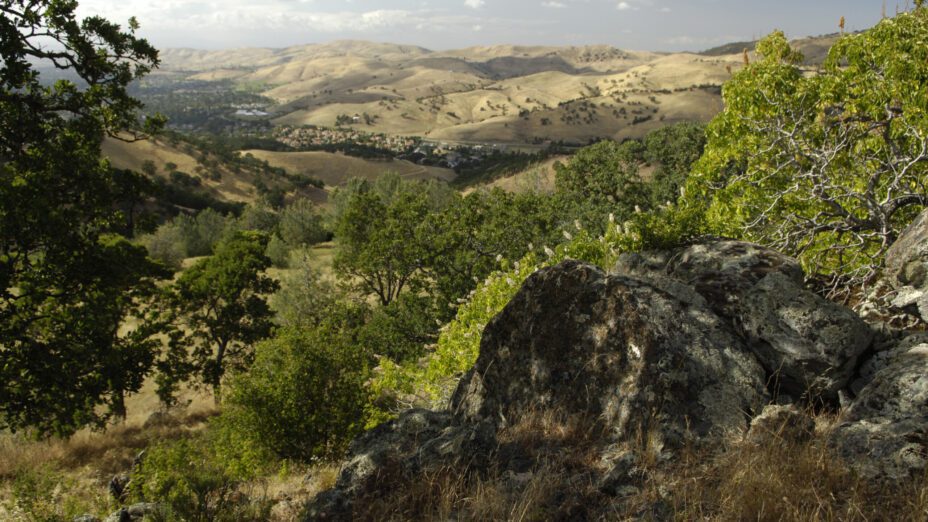
| Acreage | 17.62 |
|---|---|
| Watershed | Mount Diablo Creek watershed on the north side of Mount Diablo. An unnamed stream has running water most of the year. |
| Vegetation habitats | Blue oak woodland, interior live oak woodland, serpentine chaparral, and serpentine grassland |
| Ownership | Protected by Save Mount Diablo since 2006 |
| Funding partners | Young family members |
Description
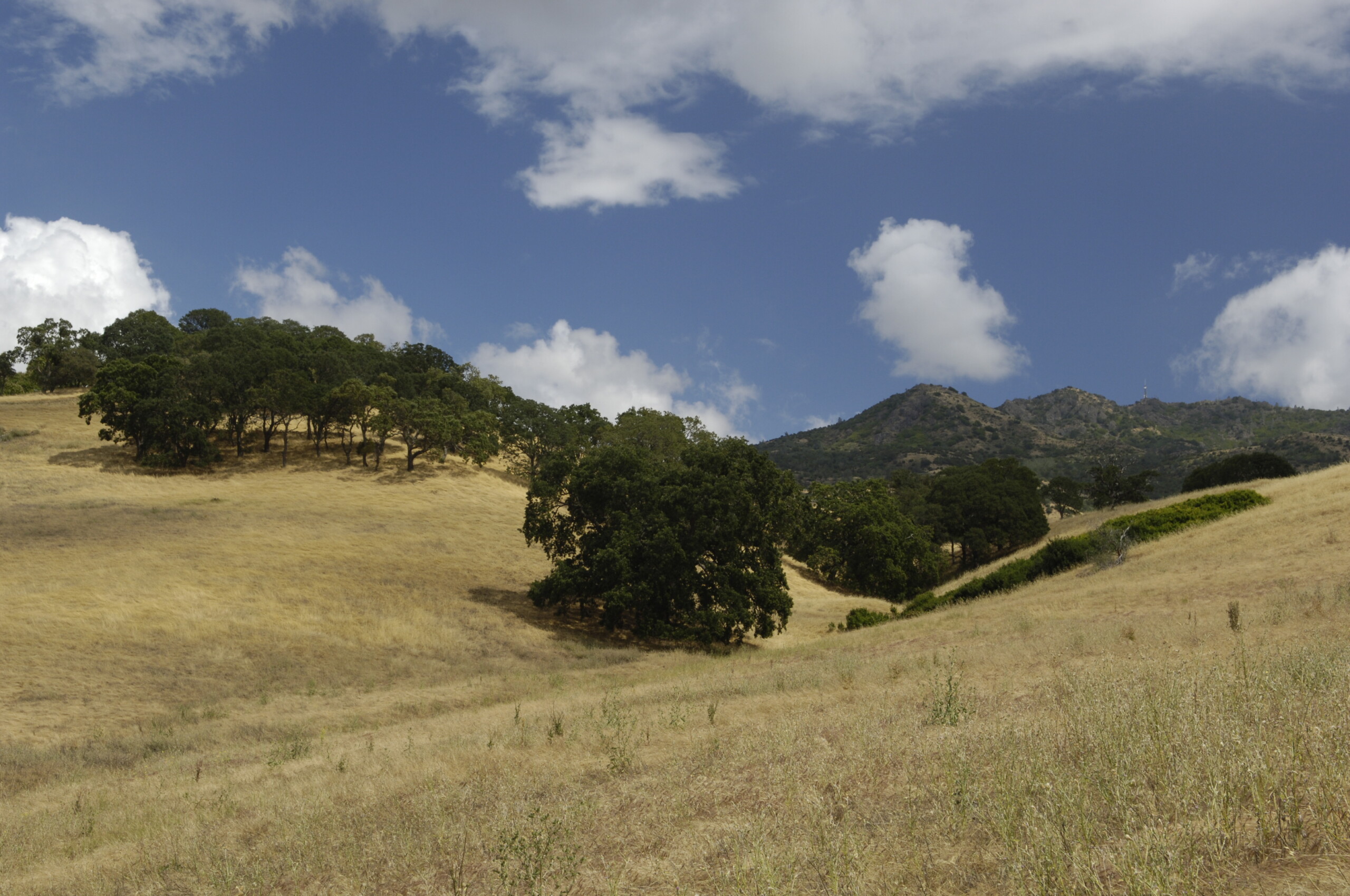
In 2006, Save Mount Diablo acquired 17.62 acres of Young Canyon. Young Canyon is located halfway up the North Peak of Mount Diablo, sandwiched between Mount Diablo State Park and the Concord Mt. Diablo Trail Ride Association property, and crossed by a heavily used horse trail.
Trails provide critical access to the Young Canyon property because there is no legal access for automobiles.
The property is part of the “Missing Mile,” a square mile of private land on the slopes of North Peak, and Save Mount Diablo’s first acquisition project there.
Young Canyon drops from a high 1,420-foot knoll near an area called Cardinet Oaks—with incredible views down the Clayton Valley to Suisun Bay—into a mossy, fern-filled stream canyon, then slopes back up to a rocky meadow of wildflowers.
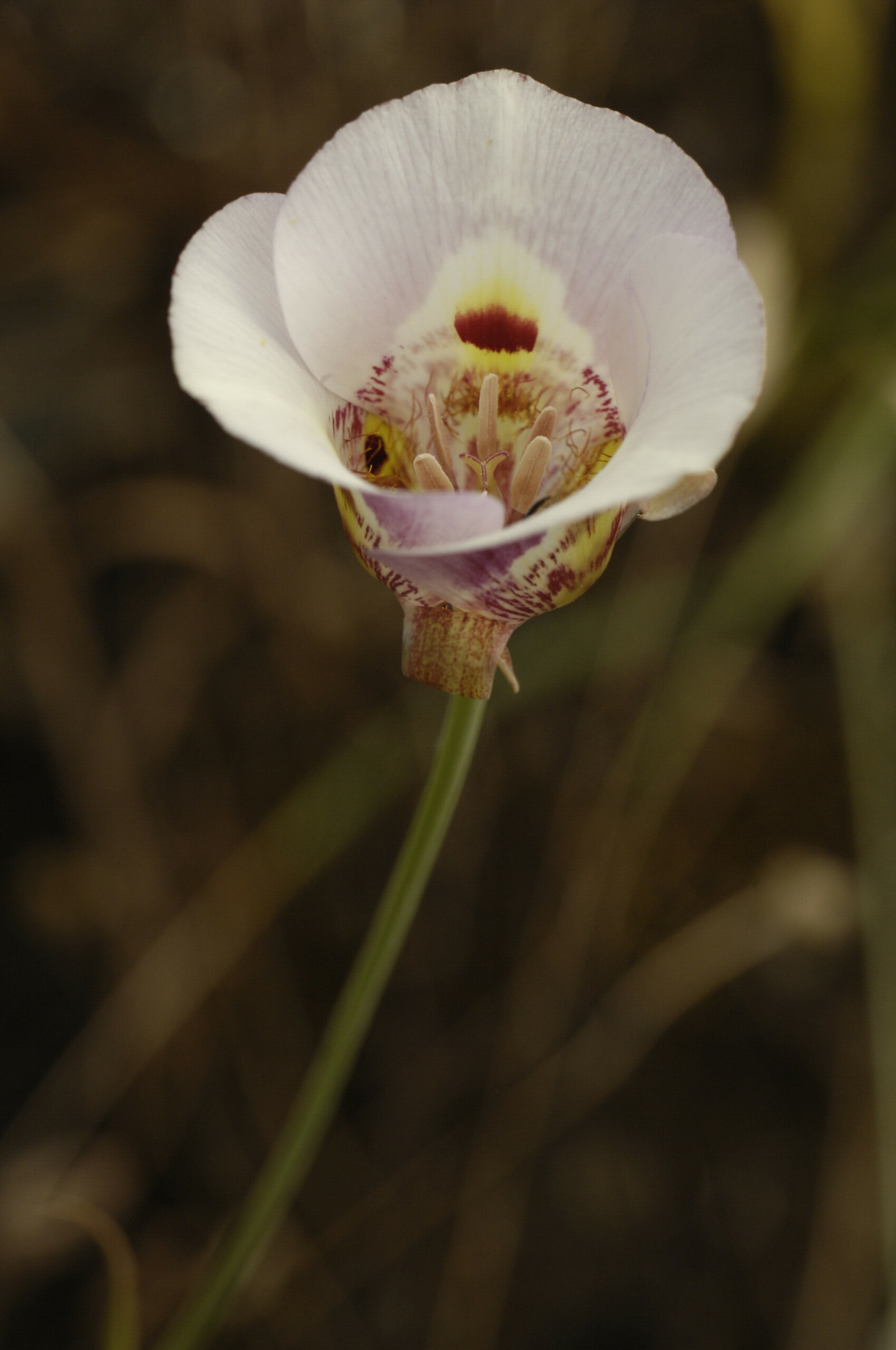
Breezes there never seem to stop. Hawks call and turkey vultures float by on thermals.
A single track trail, the Bruce Lee Trail extension, crosses the property from the Trail Ride property to the state park, following a large band of serpentine rock. The Cardinet Oaks Trail, used by equestrians, crosses the upper, southern boundary of the property.
Young Canyon is small but very rich botanically.
The meadow is just a few hundred feet wide, studded with strange green rocks that look like a snake’s skin and as a result are called “serpentine.” They’re mildly toxic and often associated with rare plant species that have evolved to tolerate them. Serpentine is California’s state rock.
The Young property is crossed by the only band of serpentine on Mount Diablo. That’s why Mary Bowerman, Save Mount Diablo’s late co-founder, started visiting the property in the 1930s and kept returning, decade after decade.
Botanists surveyed the property for Save Mount Diablo in July 2006 and, although it was late in the season when many plants had died or gone to seed, they identified 123 species including five rare ones. All five are endemic to California, meaning they can only be found in the state.
They are: most beautiful jewel flower (Streptanthus albidus ssp. peramoenus), not to be confused with the Mount Diablo jewel flower (Streptanthus hispidus); Brewer’s dwarf flax (Hesperolinon breweri); and Contra Costa manzanita (Arctostaphylos manzanita ssp. laevigata), which is restricted to Mount Diablo and Morgan Territory.
Not endangered but rare in the East Bay are Griffin’s bellflower (Campanula griffinii) and California thistle (Cirsium occidentale var. californicum).
The property is habitat for the threatened Alameda whipsnake (Masticophis lateralis euryxanthus), and the many rock outcroppings shelter northern Pacific rattlesnakes. Trail Ride members frequently see coyotes and bobcats and have reported mountain lions in the past.
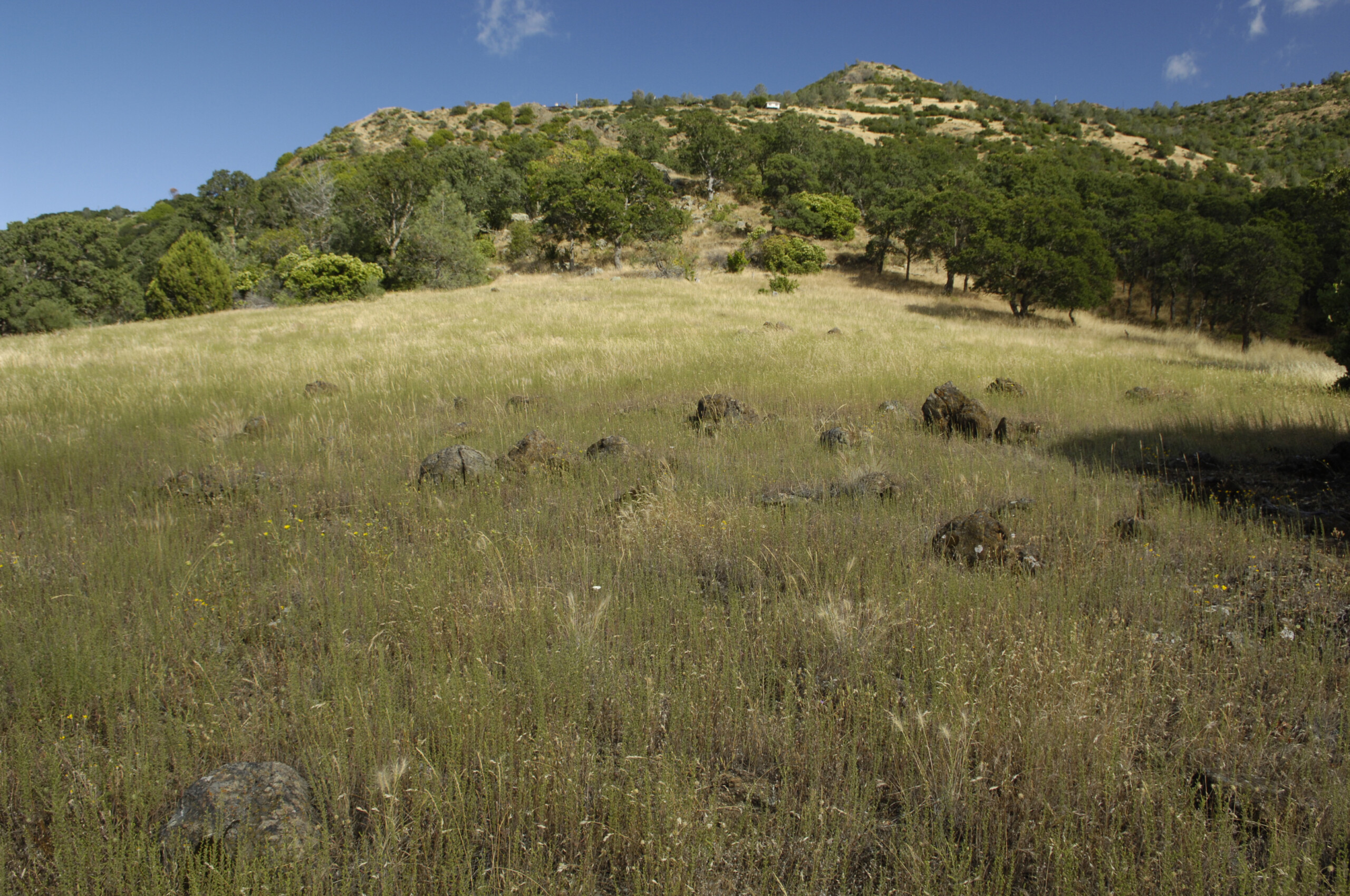
“Young Canyon is critical for many reasons,” said Ron Brown, SMD’s former Executive Director at the time of the purchase.
“It includes unique geologic and botanical resources; it’s in a prominent high elevation location on the slopes of North Peak that overlooks a valley that houses a significant population. Residents who live in sight of North Peak look up and appreciate the views from their side of the mountain,” he said.
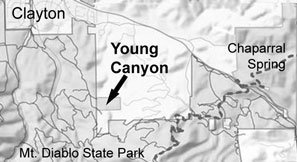
Save Mount Diablo’s properties are closed to the public except by guided tour.

